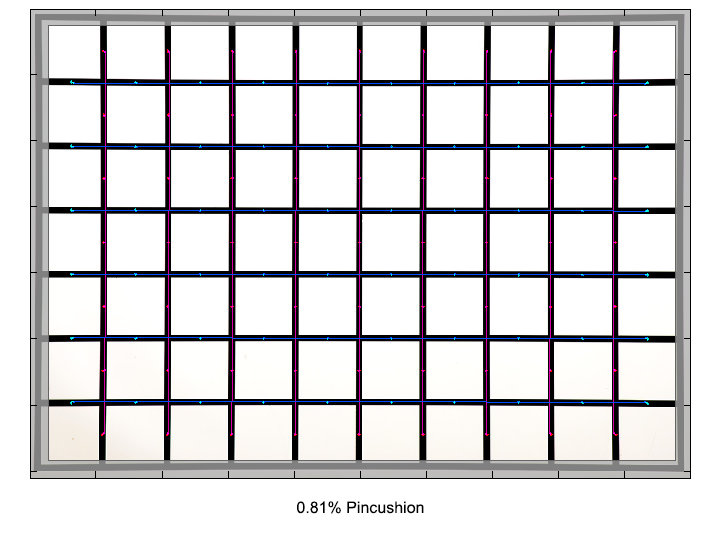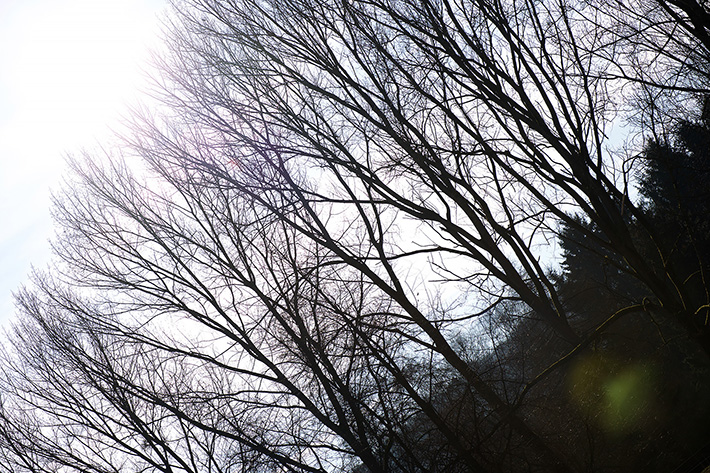|
Nikkor AF-S 105mm f/1.4E ED (FX) - Review / Test Report - Analysis |
|
Lens Reviews -
Nikon / Nikkor (full format)
|
|
Page 2 of 3

Distortion
The lens produces a small amount of pincushion distortion. This can be visible in subjects with straight lines near the image border. However, this is likely not the case in the majority of shots this lens is designed and used for.

Vignetting
Despite the lens' huge front element and diameter, there is of course a fair amount of vignetting that is typical and unavoidable for lenses that fast. Wide open, the light fall-off towrads the borders reaches 1.8 stops. Stopped down to f/2 it's already down to 1.1 stops and likely not relevant for most subjects anymore from f/2.8 onwards.

MTF (resolution)
Excellent. Period.
Never had anything like this in the lab before. Does this chart really need any more description or explanation?
Ok, two remarks maybe: surprisingly, wide open the best resolution is reached slightly off-center (also visible in the MTF charts published by Nikon). Still, that doesn't really make any difference: resolution is just insanely high across the whole frame. Obviously, the lens is designed for sensors with higher pixel density than our D3x test camera.
And a minor drawback: there is a slight amount of focus shift when stopping down.
Please note that the MTF results are not directly comparable across the different systems!
Below is a simplified summary of the formal findings. The chart shows line widths
per picture height (LW/PH) which can be taken as a measure for sharpness.
If you want to know more about the MTF50 figures you may check out the corresponding
Imatest Explanations

Chromatic Aberrations (CAs)
Chromatic aberrations (color shadows at harsh contrast transitions) are very well controlled and show small values of around 0.3 pixels on average at the image orders wide open, slowly increasing by stopping down.

Bokeh
The lens produces very pleasant and soft out of focus blur. This is true for subjects both behind as well as in front of the focal plane and includes the often critical transition zone.
Out-of-focus highlights are evenly filled, but due to mechanical vignetting of the lens mount show a cat's eye effect towards the image borders. Stopping down reduces this effect.
All in all, very pleasant bokeh, only troubled by some bokeh fringing in background highlights (see next section).

Bokeh Fringing
Bokeh fringing (non-coinciding focal planes of the various colors) is a common issue with relatively fast glass. As you can notice below the halos have different colors - magenta (red + blue) in front of the focus point and green beyond. Unlike lateral CAs, bokeh fringing cannot easily be fixed in post processing.
Typical for most fast primes, especially ultra fast ones, the Nikkor shows some amount of bokeh fringing at large aperture settings. The issue is mostly gone from f/5.6 onward.
In addition, these shots also illustrate the focus shift when stopping down that was mentioned in the MTF section. The effect is slightly emphasized in these images, which were shot at the lens' minimum focus distance. At more field-relevant distances the issue is less pronounced.
Flare
The Nikkor handles backlight very well and maintains a high level of contrast, however it's not free of flare. If a string light source is near one of the image corners (either within or just outside of the frame), flare spots can appear at the opposite image corner.
Below is a sample image that shows how flare with the Nikkor might look like in these light conditions.
(Please click on the images to open a larger version in a new browser tab or window)

|